Back
YŪZEN DYEING
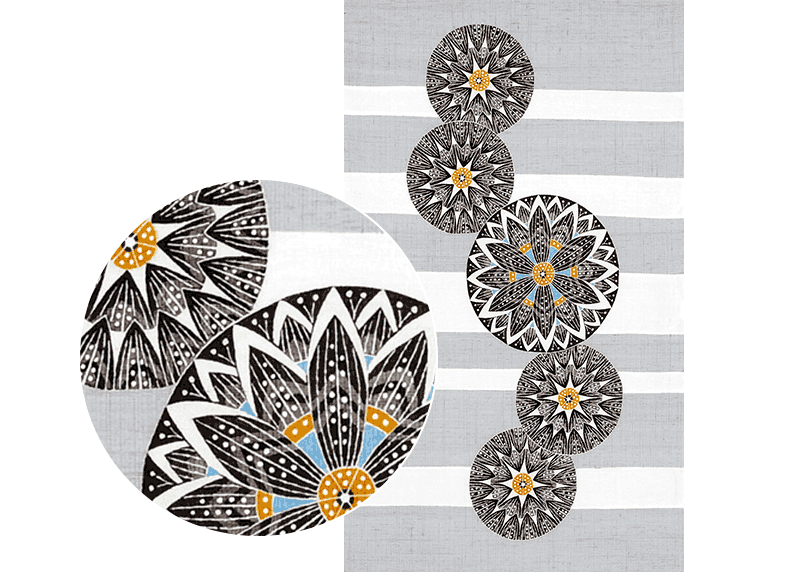
Description
Yūzen dyeing (yūzenzome) is one of Japan’s best-known traditional dyeing processes. It involves drawing designs on white fabric with a paste resist before dyeing the fabric. First, the fabric is cut into the shape of a kimono and an outline of the design is drawn onto the cloth using the blue dye of the Asiatic dayflower (aobana), which can later be washed away without leaving a trace. A paste resist is then applied over the lines of the outline, creating masked-off areas that prevent the colors from mixing, and the design is dyed. Finally, the paste resist is washed away, leaving behind fine white lines of undyed fabric where the resist was applied. This style of yūzen is known as itome yūzen (“line yūzen”). Resists may also be applied broadly across the fabric to create designs without white lines. This style of yūzen is known as sekidashi yūzen.
The paste resist used in yūzen (known as itome nori, or “line paste”) is made from the flour of sticky rice and white rice. When the paste is washed away, it leaves behind white lines that emphasize the contours of the design.
Process
-
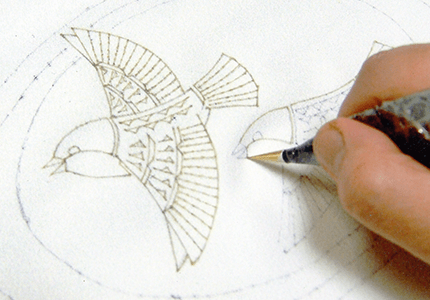 1.The blue dye of the Asiatic dayflower (aobana) is used to draw outlines and a paste resist is applied over the top.
1.The blue dye of the Asiatic dayflower (aobana) is used to draw outlines and a paste resist is applied over the top. -
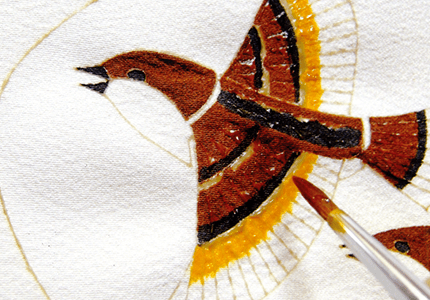 2.Once the paste dries, the design is dyed, and the fabric is steamed to set the colors.
2.Once the paste dries, the design is dyed, and the fabric is steamed to set the colors. -
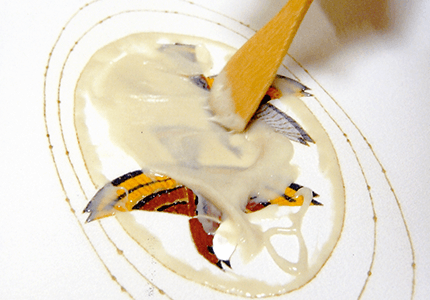 3.A paste resist is applied over the design and any parts of the fabric to be kept white. Then the ground of the fabric is dyed a base color.
3.A paste resist is applied over the design and any parts of the fabric to be kept white. Then the ground of the fabric is dyed a base color. -
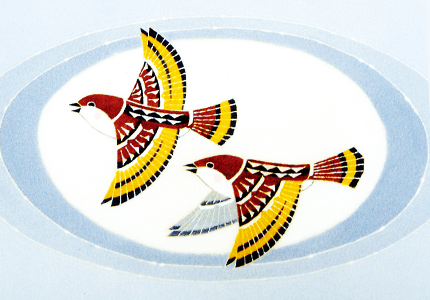 4.The fabric is steamed to make the color set, and the finished fabric is washed.
4.The fabric is steamed to make the color set, and the finished fabric is washed.
-
Reference: Nihon Kōgeikai Higashi Nihon Shibu (Japan Kōgei Association Eastern Branch), ed., Dentō kōgei-tte nani? – miru, shiru, tanoshimu gaido bukku (What Are Traditional Crafts? –A Guidebook to Seeing, Learning, and Enjoying). Unsodo, 2013.
